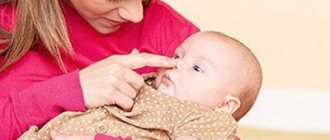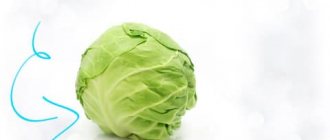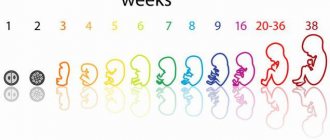Advertisement
The birth of a child is the most important event in the life of any woman. It is not surprising that all life begins to revolve around a tiny and so necessary creature. Now a calm atmosphere, compliance with the necessary hygiene standards and well-organized feeding are the main tasks of a young mother. Adequate nutrition of a child in the first month is the basis for his good health and normal development.
During the first month of life, the newborn's diet consists of mother's milk. If there are objective reasons that do not allow a woman to breastfeed, dry milk formula is used to feed the baby.
How does a baby learn about the world around him at one month of age?
At this age, the development of the baby has its own characteristics. Knowing them, an attentive mother will always answer the question: how is her baby growing.
Tactile sensations
The baby is very sensitive. To form contact between mother and baby, it is recommended to create a comfortable environment for him:
- You should touch the baby’s body with pre-warmed hands.
- The clothes worn must be dry and warm.
- There should be fresh air in the room.
- But drafts are excluded.
- The temperature in the room where the baby lives should be 20-22 degrees.
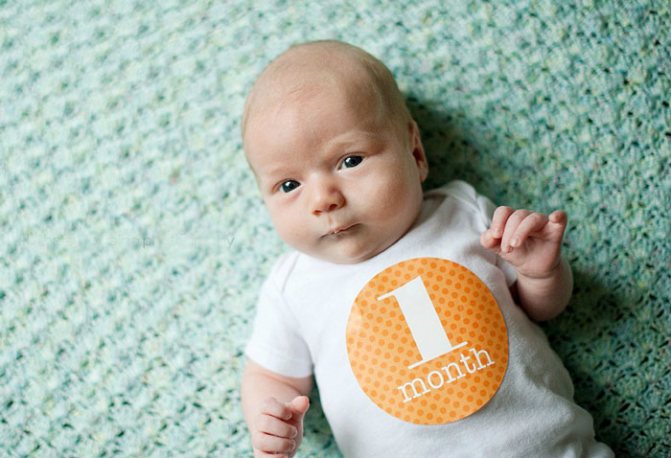
When changing diapers or getting dressed for a walk, the mother should gently stroke the baby and talk to him.
Cognitive skills
A one month old baby is characterized by impulsive reflexes. They are formed automatically when exposed to a stimulus. For a one-month-old baby, these skills include:
- ability of short-term gaze fixation;
- difference in contrasting colors;
- focusing your gaze on the mother's face;
- ability to distinguish the volume of sounds;
- the ability to distinguish and highlight the mother’s voice.
Subsequently, the baby develops a grasping reflex. The baby is able to connect the face and voice of the mother, that is, create an image.

Psychomotor skills
The psychomotor skills of a 1-month-old child are expressed in reactions. There are seven basic, natural reflexes:
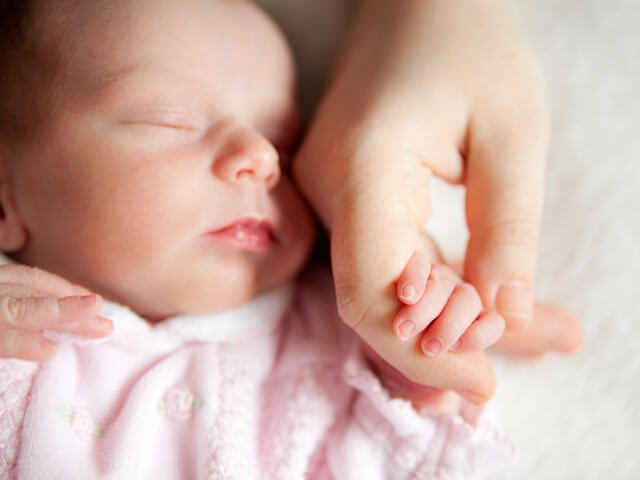
- Search. Touching the corner of the baby's mouth, it is not difficult to notice how he, literally instantly, begins to curl his lips and turn his head in search of his mother's breast. If you continue to disturb the mouth more deeply, the baby will express dissatisfaction and try to dodge.
- If you pass a pacifier or finger over your lips, you will awaken the sucking reflex, which functions both as food production and as a sedative. This reflex persists throughout the first year of life.
- Grasping reflex. By placing your fingers in your palm, you can feel the child grasp them tightly and squeeze his palms tightly.
- If you press on the middle of your palm, the palmar-mouth reflex will work. The baby opens his mouth slightly.
- Protection as a way to survive. If you put the baby on his tummy, he will automatically turn his head to the side. The child is in a healthy state, he is not afraid to sleep on his stomach at night, he will not suffocate.
- Walking simulation. You can check this reflex by holding the child in your arms. At the same time, his feet should sway slightly on the hard surface. He will begin to move his legs alternately, reminiscent of walking. You need to pay attention to the fact that the legs should alternate. If the baby performs such movements with only one leg, then you should consult a pediatrician.
- Despite the fact that babies begin to crawl much later, and not all of them, this reflex is innate. By placing the baby on his tummy and touching his feet, you can see how he tries to crawl.
From about the third week, the baby tries to copy his mother’s facial expressions. At the level of intuition, a newborn feels well the emotional state of mom and dad. If they are irritated, then the baby will begin to be capricious.
He also has developed senses, touch, smell and taste buds. He unmistakably recognizes his mother by smell and responds to any touch. It is these receptors that work perfectly in the first month of life. Experts suggest that taste buds develop while still inside the womb.
The baby's organs of vision and hearing are slightly less developed. Vision develops gradually, and at first he sees everything only in black and white. Then, he begins to distinguish between red and yellow. Because of this, he is able to see both vertical and horizontal stripes and a cage. He will learn to distinguish primary colors only by five months.

What else can he do? Find the source of sound even if it is alone in the room. He will unmistakably be able to distinguish his mother’s voice from others. From the first days, a child needs to play a variety of music, read fairy tales, sing songs, given that children of this age prefer high tones. Audio books with children's fairy tales are especially helpful for mothers when there are urgent matters and the child is alone in his crib.
Baby's basic reflexes
During the first month of life, the baby exhibits basic reflexes. Some disappear with further development. The rest are converted into conditional ones and remain until the end of life. The little one can:
- Grab the adult’s finger and squeeze it tightly.
- Turn the head towards the cheek that the mother will stroke. This is how the baby finds food.
- Make sucking movements when an object comes into contact with the lips. This is how the baby reacts to the appearance of food.
- Spread your arms to the sides and straighten your fingers when hitting once on the plane on which the baby is lying. This is the Moro effect.
- Turn the head and open the mouth when pressing on the tubercle of the palm under the thumb. The head will turn towards the handle being manipulated. This is the Babkin reflex.
- Spread your toes out to the sides while stroking the back of your foot. This is the Babinski reflex.
- Push off from the adult’s palm pressed tightly to the legs while lying on your tummy.
- Push off with your feet from a horizontal surface with support under your armpits.

By developing the last 2 points, you can ensure that the baby crawls and starts walking faster.
Taste and olfactory reflexes
During this period, the baby distinguishes the taste of food. He distinguishes between salty, sour and sweet: he winces and grunts. If the mother eats something inappropriate, the baby refuses breast milk. Strong smells cause the baby to grimace and cry.
Emotional and social development
At one month old, the baby perfectly feels the emotional state of her mother. If she is calm, he is happy. When mom is upset, she starts crying loudly. The baby reacts to conversations with him. He begins to make joyful sounds when addressed affectionately. At this time, during periods of wakefulness, it is recommended to talk with the little one as much as possible: this will establish contacts with the mother and help to socialize later.

Centimeters and grams
The message for relatives and friends that you have had a baby sounds something like this: “Boy, 3500 g, 52 centimeters.” Kilograms of weight and centimeters of height are the most important first indicators of a newborn, by which a pediatric neonatologist can assess the physical condition of the child. The norm for those born is:
- Height in the aisles is 45-56 cm;
- Weight 2500-4100 g;
- Head circumference 33.5-36 cm;
- Chest circumference 31.5-34 cm.
In order to monitor the child's development, it is necessary to take monthly measurements of height, weight, head circumference and chest circumference. The World Health Organization and data from domestic pediatricians have compiled tables with indicators of the upper and lower limits of important measured indicators of infants after one month of life.

Indicators of the standard weight, height, head and chest circumference of a child at 1 month
What should I do if my child does not meet the values given in the tables? Stop panicking! It is necessary to analyze the proportions of deviations. If there is a minimal deviation of one indicator, there is no reason to contact specialists; if there is a deviation of two or more parameters, it is recommended to undergo consultations and examinations.
The baby's height and weight gain is influenced by his heredity, the child's nutrition, and the quality and conditions of his life. If the parents are tall, then there is a high probability that their baby will stretch faster; the height may not correspond to the upper limit of the average, but may be greater. The average height increase in the first month of life is considered to be 3-3.5 cm.
We gain weight in the first month of existence
During the first week of life, the baby may lose grams, because the baby is born with an additional supply of fluid; 10% of the baby’s body weight may be lost. During the second week, all the swelling has already gone down, and the baby will begin to gain 15-30 grams per day. The norm is weight gain in the first month:
- For girls 400-900 g;
- For boys 400-1200 g;
- Average 750 g.

Weighing a child
Motor and physical activity
The baby spends time lying down. But he already knows how:
- turn the head to the side while lying on your tummy;
- rotates the neck in search of the source of the sound;
- during wakefulness, he moves his arms and legs (while these movements are involuntary);
- tries to lift and hold the head when lying on the tummy or standing upright.
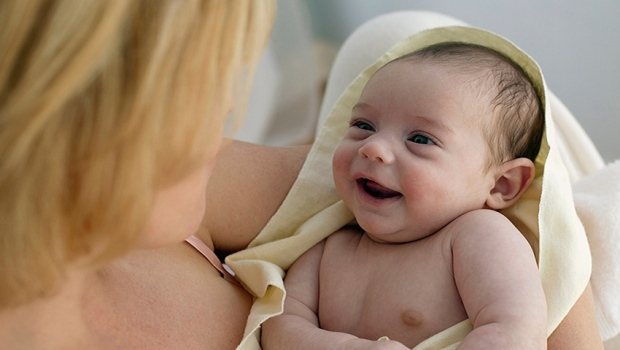
At the end of the first month of life, the baby will learn to simultaneously raise his head and butt while lying on his tummy.
What does normal development depend on?
Without the active participation of family members, the baby will not be able to develop at a normal pace. Relatives must follow simple rules for caring for the baby.
Proper care
A newborn requires competent care for rapid and successful development. It consists of following simple rules. Recommended:
- perform hygiene procedures: washing, washing, cutting nails, combing (if necessary), moisturizing the skin;
- do gymnastics and massage;
- walk with the baby in the fresh air;
- bathe the baby;
- feed properly;
- play educational games with the baby;
- stick to the daily routine;
- talk to him kindly.

It is important to understand: the entire complex of baby care should be carried out constantly.
Healthy long sleep
A one-month-old baby spends most of its life sleeping. This is necessary for proper development. The baby stays awake for ¾-1 hour. The rest of the time the baby sleeps. During the day, the baby should have up to 8 sleepy periods. Each duration is up to 2-3 hours. Night sleep lasts 8 hours. To get enough sleep, your baby needs to create comfortable conditions:
- fresh air in the room;
- comfortable bed;
- temperature 20-22 degrees;
- muffled light.
It is important to remember: a hungry baby will not sleep soundly and for a long time.

Nutrition for a 1 month old baby
The ideal food for a one-month-old baby is breast milk. At one time it sucks up to 60 ml. It is recommended to feed the baby at the first sign of anxiety. This process is called free feeding mode. A mother can have up to 12 feedings per day. Frequent latching of the baby to the breast stimulates an increase in lactation. Milk is produced in the quantities required by the baby. If there is enough milk, you should not give complementary foods at one month. It is not recommended to give the baby additional water.
If there is a lack of milk, you should report the problem to your local pediatrician. He will prescribe an adapted mixture.
Baby at 1 month: weight gain and reflexes
During the first month of life, your baby is just beginning to get acquainted with such a large and unknown world. And it is your responsibility to help him with this. Below is an approximate dynamics of child development, but it should be understood that not all children follow it one hundred percent, especially for those who were born ahead of schedule. In such children, the dynamics of development can be shifted back almost a month.
Weight gain
Advice For those who want to independently monitor the dynamics of their child’s weight gain, we recommend purchasing special scales for newborns.
Don't be alarmed if your baby loses a little weight in the first days after birth! This is absolutely normal, since children are born with an excess amount of fluid in the body and, as a rule, lose it in the first days, which can lead to a small, no more than 10%, weight loss. But by 1-2 weeks the baby gains the weight that he had at birth, and after that a stable weight gain begins. Typically, a child up to 1 month gains about 30 grams per day. In our country, the dynamics of weight gain are monitored by pediatricians, who must weigh the child and ensure that the baby’s development proceeds normally.
Reflexes
The nervous system of a newborn is actively developing, and innate reflexes play a very important role in the first month of life. Here are the basic reflexes common to all newborns:
- Sucking. Has the most direct relation to breastfeeding. The child develops sucking movements of the lips if you run a finger, pacifier, or pacifier over them. It may be absent in newborns only if there are serious problems with the nervous system. It can remain in children until almost seven years of age.
- Moro reflex. The reflex manifests itself as a newborn's reaction to a loud sound or when raising his legs and pelvis above the bed. It is expressed in the baby spreading his arms to the sides and unclenching his fists (first phase). After a few moments, the child brings his arms together (second phase). The reflex can remain up to 3–4 months.
- Support and walking reflex. If you hold the child vertically, without touching the support with his legs, he will bend them at all joints. At the same time, if you make sure that the legs touch the support, the child will imitate walking. The reflex is depressed or absent in children with spinal cord injuries and children born with asphyxia (suffocation). After 1–1.5 months the reflex is inhibited.
- Search. It manifests itself best 20-30 minutes before feeding. If you stroke the child in the area of the corner of the mouth, he will lower his lips and turn his head towards the stimulus. If you press lightly in the middle of the lower lip, the child will open his mouth and tilt his head slightly. The reflex may be absent with lesions of the central nervous system. Suppressed by 3–4 months.
- Babkin reflex. When pressing on both palms of the newborn, he opens his mouth and throws his head back a little. After 2 months the reflex begins to be suppressed, and by 3 months it disappears.
- Galant reflex. If you run your hand along the spine of a newborn, the child will arch his back. The reflex is present until 3–4 months.
- Perez reflex. If you run your finger along the baby's spine, while lightly pressing on the spinous processes, he will react by crying and moving his arms and/or legs. This reflex causes a negative emotional reaction in the newborn. By 3–4 months the reflex disappears.
- Bauer reflex. This reflex is also called spontaneous crawling. If the baby is placed on his stomach, he will make movements that are similar to trying to crawl. The reflex fades after 4 months.
- Proboscis. A quick, gentle blow to the newborn's lips with a finger causes the lips to stretch into a tube. The reflex may be present until 3 months of age.
Baby's sleep at 1 month
Being a newborn is very hard work. Your baby needs to sleep 15 to 20 hours a day! At first, bedtime may be chaotic, not tied to the time of day. And your task (if you don’t want to sleep during the day and stay awake at night in the future) is to help your child adapt to the cycle of day and night. Try to ensure that your baby's longest period of wakefulness occurs during daylight hours.
About once every 3-4 hours, children wake up for a “snack”. After which, as a rule, they fall asleep again. Be prepared to wake up at least several times a night.
Feelings
All children are born with very blurry vision, the cause of which is myopia. As a result of this, your baby sees best objects that are 20-30 cm away. This means that your baby clearly sees your face when you feed him and he loves looking at it! All infants will give preference in choosing an object to study to a human face or some kind of high-contrast object (they are easier to see).
You may notice that your child squints from time to time. There is nothing wrong with this, since his ability to control his eyes is only developing. The “squint” effect remains pronounced for 3–4 months, then subsides. It may disappear completely after 8–9 months.
Hearing in newborns is also not 100% developed. However, babies hear sounds and recognize their parents' voices. They especially like high-pitched sounds. So don’t be annoyed if others talk to your baby in high, funny childish voices.
Advice Children love to be touched. Stroke him often, give him a very light massage. This will help your child feel loved.
If your baby does not respond to sounds at all within a few weeks after birth, it is best to consult your pediatrician.
Like older children, newborns prefer sweet tastes because their taste buds are not yet mature enough to distinguish between bitter and sour.
All babies have a good sense of smell. They easily catch the smell of mother's milk at a short distance already in the first days of life.
Nutrition for one month olds
One-month-old breastfed babies often ask for a snack - children at this age eat 8-12 times a day (every 2-3 hours). Moreover, if your bottle-fed baby asks to eat less often - about 6-8 times every 24 hours. Some parents feed their babies on demand, and some on a schedule. The choice is yours, we can give only a few recommendations on how to determine whether your child is getting enough:
- You change at least 6 wet diapers per day;
- Your baby is calm after feeding and tends to sleep;
- When you touch the baby's cheek, he does not open his mouth.
Physical development
The first month of life is the hardest for your baby. Adaptation occurs to a completely different environment, with its own set of stimuli. After birth, a child's circulatory system changes greatly. She “learns” to work without her mother’s help. Red blood cells with the fruit type of hemoglobin are destroyed and are no longer needed by the body. The kidneys (which did not function during intrauterine development. Their role was almost played by the mother), digestive and endocrine systems begin to work. The intestines begin to acquire their own microflora. The skin adapts to the atmosphere, the respiratory system is strengthened.
Vaccinations
In the first 12 hours of life, you will be offered to vaccinate your child against viral hepatitis, and within 2-3 days - a BCG vaccination (Bacillus Calmette-Guerin against tuberculosis). At the end of the 1st month at the beginning of the 2nd, you will also be offered a vaccine against hepatitis B. It is up to you to decide whether to get vaccinated or not.
Communication
Newborns have essentially one way of communicating - crying. In the first month of life they do this most often (on average about 3 hours a day). Crying is a baby's opportunity to show that he is hungry, has a wet diaper, or is tired and wants to sleep. In this case, parents should try to understand the cause of crying and eliminate it. If your baby cries too much, he may be colicky or in pain. In any case, the best solution to this situation is the help of your pediatrician.
Next article:
Child at 2 months: achievements and development standards
What is characteristic of a newborn's behavior?
A one-month-old baby sleeps most of its life. But during his short wakefulness, he improves the skills acquired at birth:
- actively moves arms and legs;
- willingly listens to songs, nursery rhymes, chants;
- briefly fixes his gaze on his mother’s face and bright objects;
- tries to raise his head.

It is important to encourage such activities in the little ones.
Physiological indicators by the end of the first month
Physiological indicators differ from those recorded when the baby was born:
- By the end of the first month, the baby stops sleeping in the fetal position.
- Even when sleeping on his tummy, he turns his head to the side (a protective instinct appears).
- A normally developing baby can lift his head and bottom at the same time.
- The baby’s blood circulation is restructured: the brain, kidneys, and liver are supplied more intensively.
- The immune system is being formed.
- The fontanelles begin to overgrow.
- The umbilical wound heals.
- The skin is no longer too dry, but still needs to be moisturized with special products.
- White spots (milia) disappear from the baby’s face.
- The kidneys serve their purpose, but they are still immature.

During this period, parents are required to ensure proper hygiene. This will help the physiological characteristics develop faster.
Diet
At this age, the baby has only 8 teeth, but it is still necessary to give solid food, just grind it well. Just cottage cheese and puree – that won’t be enough.
- During this period, you need to diversify your baby’s menu with dairy products. Kefir, yogurt, sour cream should be included in the daily diet. In order not to introduce various preservatives or fats that can be harmful, it is worth taking dairy products in a children's dairy kitchen.
- The child really needs various vitamins and minerals, so vegetables and fruits must be given to the child every day. The baby will be happy to gnaw on a piece of carrot or apple. Vegetable stews and soups, stewed vegetables would also be appropriate.
- Vegetables for salads can be stewed and the dish can be supplemented with a piece of boiled egg. Potatoes, carrots, zucchini and beets will be loved by the baby.
- It is mandatory to add lean varieties of meat to the diet: young veal, beef and young chicken. Steam cutlets, pates and casseroles would be appropriate. It is better to give your child meat dishes for lunch, because for dinner it may be too heavy food before bed.
- Fish is also added to the menu in small quantities. The following varieties are recommended: lean cod, pollock. You can add some boiled vegetables.
- Porridges made from various cereals will be useful. Buckwheat, rice, semolina, oatmeal, egg and barley can be cooked in water or milk. You can add a few grams of butter. Porridge is usually served for breakfast.
- For an afternoon snack, it is recommended to make fruit salads. The main ones are bananas, apples and pears. If possible, berries are also added: raspberries, blueberries, currants and cranberries. It is not only healthy, but also very tasty. You can make salads with yogurt.

Menu for a child for 1 day
Breakfast - steamed omelet, porridge with milk, bread and butter (without crusts), tea.
Lunch – pureed borscht, chicken soufflé, mashed potatoes, compote.
Afternoon snack – kefir, cookies, grated apple.
Dinner – Buckwheat porridge, milk, bread.
Some parents believe that if a child eats a lot, then it is possible to give absolutely all the dishes that adults eat. But that's not true. There are foods that you absolutely cannot give to your baby for a long time.
List of prohibited products
- All types of broth (they are too concentrated for a child’s body).
- Sausages and sausages, except those made specifically for children.
- Millet porridge, except for adapted options for children.
- Curds, curd mass, miracle milk and industrial desserts.
- Seafood.
- Chocolate in any form.
- Cakes and pastries with cream.
- Mushrooms.
- Fried food (it will irritate the baby's stomach lining).
- Dishes are breaded, with vinegar and spices (squash caviar, eggplant).
You can add salt to food. But only in small portions. Keep in mind that some products contain salt in their composition, so that the sodium and chlorine necessary for humans are supplied to the diet in the right quantities.
The child must have his own place for feeding. The special table and chair at which the child sits must be adapted to the baby’s growth. He is already trying to eat on his own, so be patient when everything within a meter radius around your child is mashed potatoes. When the baby gets tired, carefully feed him with a spoon.
During meals, you should remove objects that may distract the baby and turn off the TV. It is recommended to eat next to the child. He will look at you and repeat the movements. Tie up the bib during feeding and be sure to praise if the baby tries to eat and drink on his own. Don’t scold him under any circumstances, because then you won’t force him to sit down at the plate at all.
Examination of the child by medical workers
In addition to a follow-up examination with a local pediatrician, the baby will need an examination:
- surgeon;
- orthopedist;
- ophthalmologist;
- neurologist.
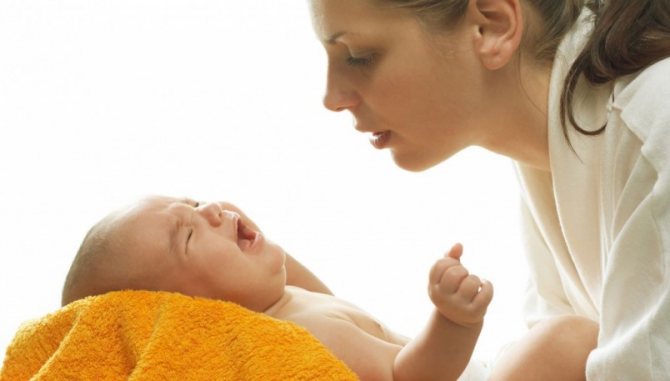
It is not recommended to neglect the examination: pathologies identified at an early age are easier to treat.
How to promote baby development
Inexperienced parents think that at 1 month the child is too small to play. But for successful development, it is recommended to know how to play with a month-old baby.
Games in 1 month
To develop hearing and speech, you should talk to the little one more often. In response to mommy’s words, he says his “aha.” To develop color vision, you should hang colorful rattles over the crib. It is recommended to change garlands. The baby should be often picked up, stroked, and tenderly. This creates a feeling of security.
Here we are at home
The behavior of a newborn in the first weeks of life is a continuous chain of various reactions to stimuli and sensations received from the outside world. The baby was safe for a long period, and now it takes time to get used to the new life outside the womb.
To make the adaptation period for you and your baby as painless as possible, you need to simply fulfill a number of absolutely simple conditions within 1 month.
- Reduce the number of guests and visitors in the home to a minimum. Let only the closest people be nearby for now. There should not be more than three people near the newborn at the same time; a large crowd of people can scare the baby.
- Postpone non-urgent activities until later. Things will change sooner or later, and the unforgettable period from 0 to 1 month is extremely important in the development of the baby. A constantly distracted mother will not notice any deviations in behavior in time, and will simply lose precious time, which is worth spending on fruitful communication with the child.
- In the first two weeks, it is recommended to maintain the feeding and sleep schedule that was established while you and your newborn were in the maternity hospital, thanks to which the baby will quickly adapt to the new environment. Don’t worry too much about this, soon the child himself will establish a daily routine that is convenient for him, all you have to do is adapt to it. Do not consider this as pampering, it will be much calmer for both you and him.
Once you firmly understand the three points above, you will understand everything immediately, and the first month will not be stressful.





